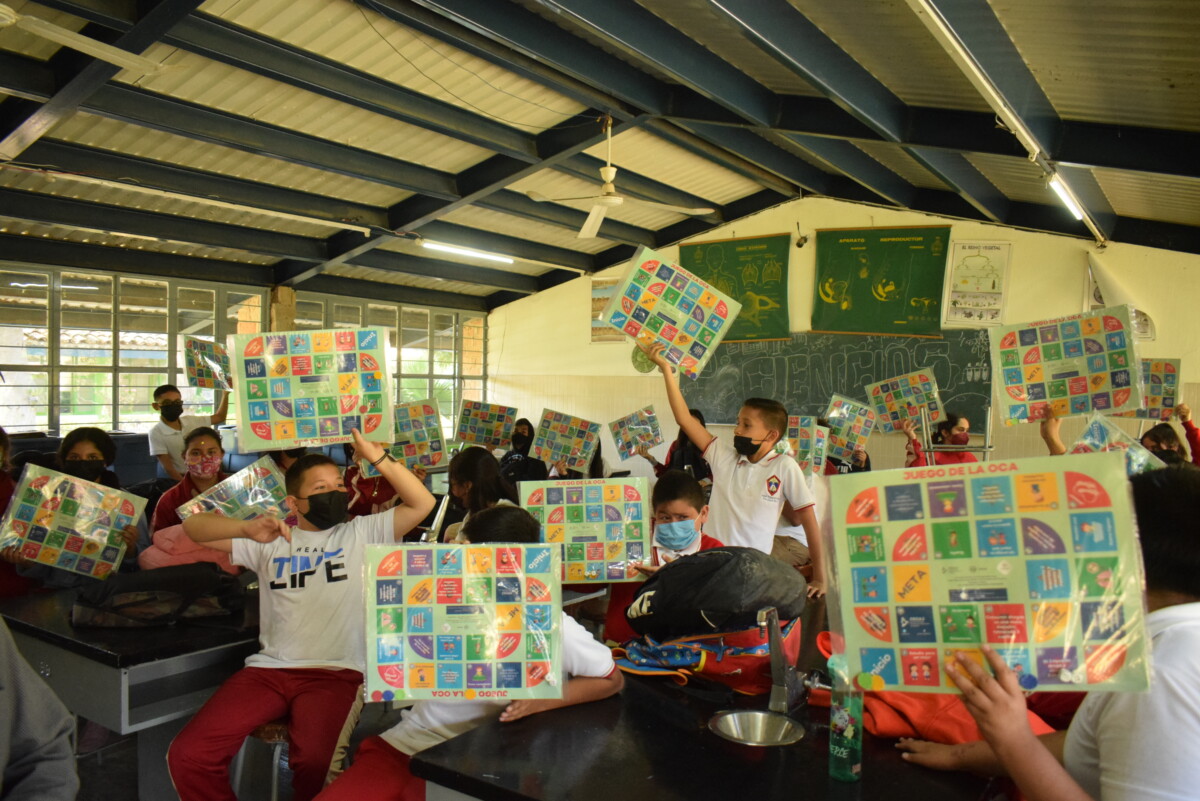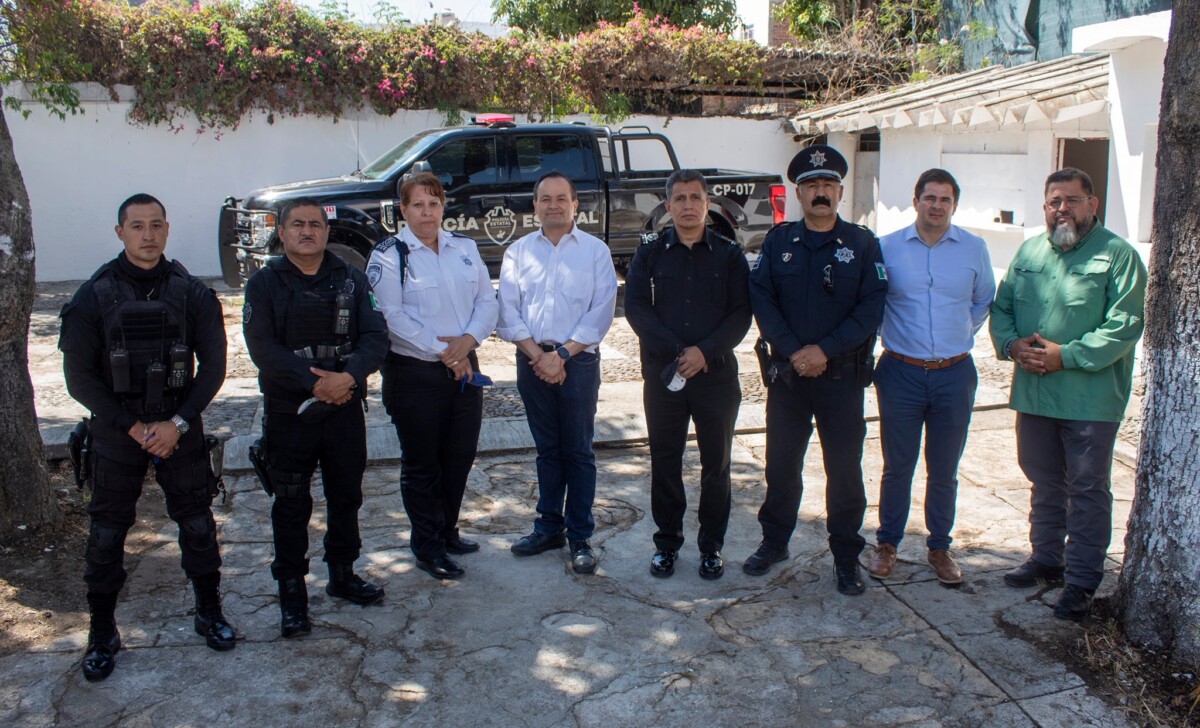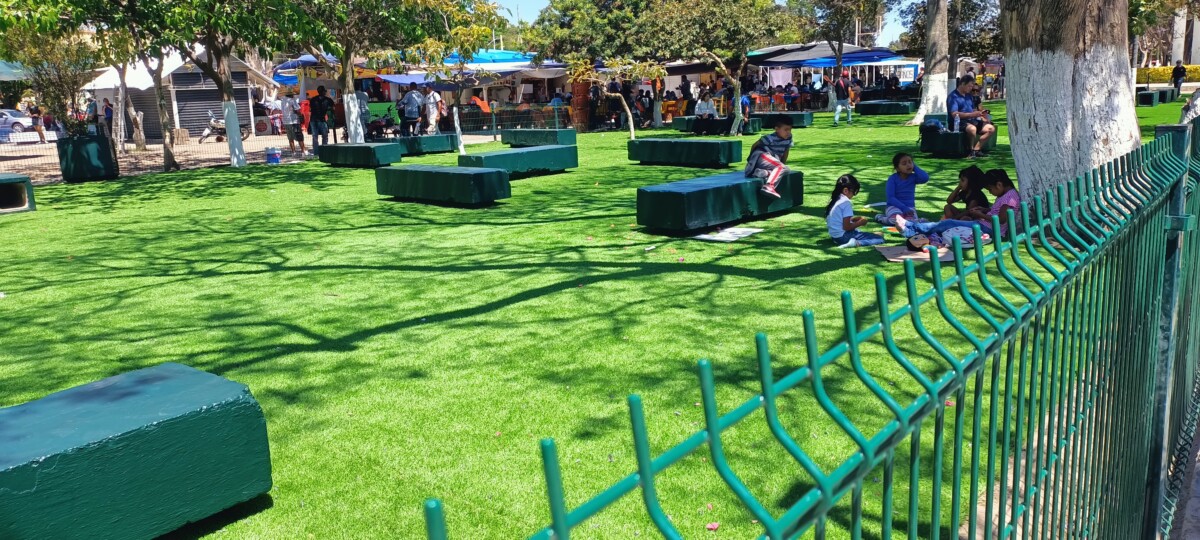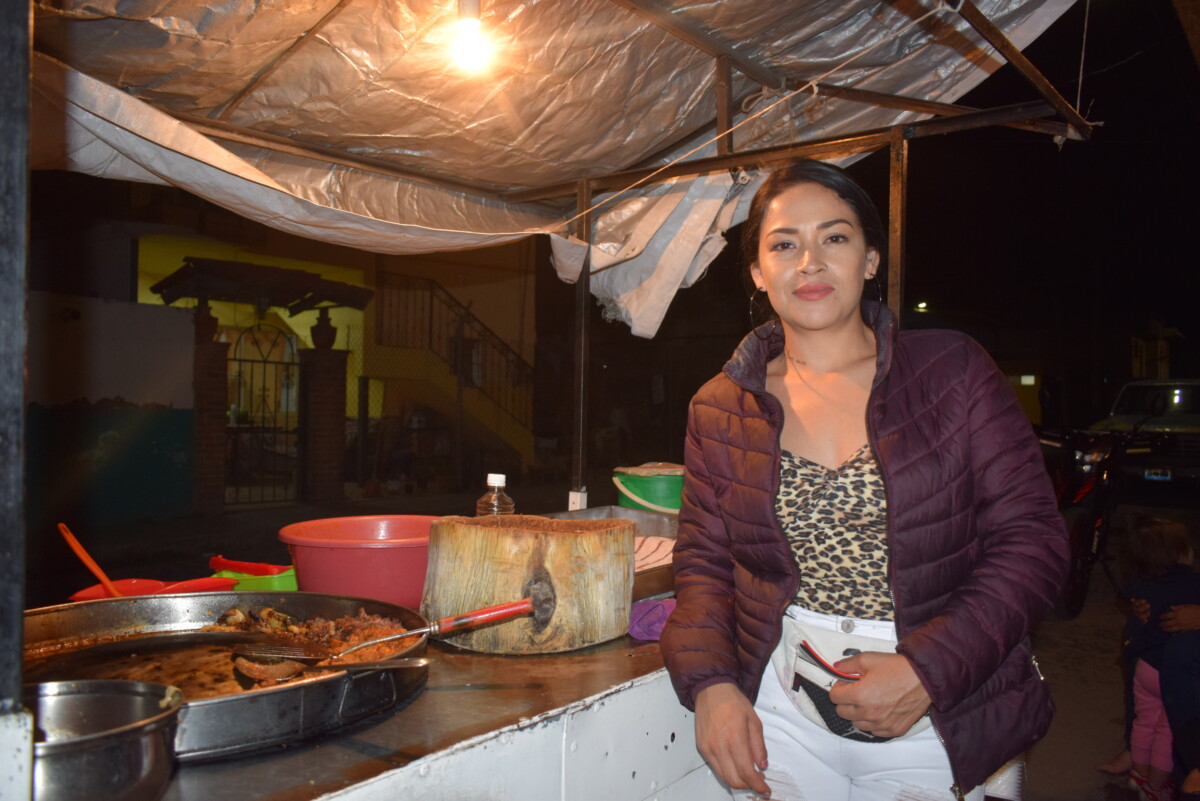Chapala
‘Agua de Arrayán’, el sueño que Víctor alcanzó después de superar el cáncer
Víctor García (derecha) ingeniero de audio y Ramón Ramírez, director de fotografía, junto al cartel de la película Agua de Arrayán donde participan.
Jazmín Stengel.- El compositor Víctor Ignacio García Rodríguez de 30 años de edad (1991), venció el cáncer en el 2019; un año después, la vida le regaló cumplir el sueño de su infancia: musicalizar una película.
García Rodríguez participó en «Agua de Arrayán», del director Alejandro Robles Gil, producción cinematográfica jalisciense que se estrenó el pasado 24 de marzo.
Aunque Víctor ya había tenido un pequeño acercamiento musicalizando con el cortometraje “Primera Lección de Magia”, dirigido por el joven de Ixtlahuacán de los Membrillos, Ramón Aurelio Ramírez Hernández; Robles Gil le dio la oportunidad de hacerse cargo de toda la musicalización del largometraje.
Sin embargo, dos años antes la vida de Víctor pendía de un hilo; a finales del 2018 le detectaron un tumor maligno, el cual creció de una manera descontrolada, obligando al compositor a ser operado en menos de siete meses o tendría los días contados, según le notificó el médico.
«Me faltaba mucho por vivir, ya que aún quería cumplir mis sueños, como musicalizar una película, pensé que ya no lo iba a hacer, porque no tenía el dinero; no tengo seguro y soy músico de corazón», recordó García Rodríguez.
Un grupo de extranjeros, amigos y admiradores del músico, fueron los primeros en organizarse para recolectar donaciones a favor de la causa. Días después, el 17 de febrero del 2019, se realizó un evento organizado por Daniel Cordero con más de diez grupos musicales y solistas, en el Iron Horse, un bar de motociclistas ubicado en la agencia Riberas del Pilar.
Ese día, dos bares cerraron sus puertas, pintores y fotógrafos donaron sus obras y más de un centenar de músicos regalaron su trabajo. Así fue como la comunidad de Chapala y Ajijic logró reunir la cantidad necesaria para salvarle la vida a Víctor.
«Tantas veces que he dado mi música de corazón a la gente, eso ha sido un milagro de Dios”; y es que el amor que Víctor le tiene a su pueblo, el pueblo también se lo tuvo. Hasta el día de hoy, García pasó por el proceso de cirugía y radiación tres veces y falta una más, todas han sido pagadas mediante donativos que la gente le ofrece de corazón, aseguró.
En lo que respecta a la musicalización de la película “Agua de Arrayán”, que trata de la historia de un peregrino que hace su recorrido para visitar a la Virgen de Talpa y en la cual se exaltan los valores y el crecimiento personal, el compositor hizo las armonías utilizando sólo una computadora, una interfaz, un controlador y monitores de bocina. «La composición es algo misteriosa», expresó Víctor.
El compositor y músico desea continuar su trayectoria en el mundo del cine, «aún me queda un camino muy largo por recorrer, el conocimiento puede ser infinito”, concluyó.
La película “Agua de Arrayán” ya está en cartelera y se puede ver en 18 salas de la cadena Cinépolis en Guadalajara; también la película está en las salas de cine en San Luis Potosí y Monterrey.
Tacos Diana: la conservación de una receta y el sustento de una familia
Diana Ramos frente a su puesto atendiendo a los clientes durante la noche del martes 29 de marzo. Foto: Jazmín Stengel.
Jazmín Stengel.- Vendiendo tacos con la receta de adobo heredada de su exesposo, Diana Lizeth Ramos Mendoza no sólo ha logrado sacar a sus tres hijos adelante, sino que también mantiene viva una de las recetas más populares de la cabecera municipal de Chapala.
Diana Lizeth, vende tacos en el barrio de La Purísima y es proveniente de familia de comerciantes, contrajo nupcias con César Abrego, quien atiende y fue el heredero de la receta secreta del adobo de los Tacos Don Max, situados sobre la avenida Francisco I. Madero.
De acuerdo con lo que cuenta, cuando estaba casada con César, decidieron dedicarse al negocio familiar de su esposo, tiempo más tarde él se fue a trabajar con sus parientes, por lo que le dejó el negocio del cual Diana se hizo cargo y atiende desde entonces.
Así es como la joven de ahora 29 años de edad, comenzó a familiarizarse con el proceso de las carnes, salsas y adobo. Ella calcula que lleva cerca de tres años atendiendo su puesto sola, después de la separación con César «me la tuve que rifar «, expresó.
Su rutina diaria consiste en levantarse por la mañana para llevar a los tres niños a la escuela, después aprovecha el recorrido para hacer los pedidos de tortillas, comprar la carne y la verdura en el mercado de Chapala.
Después de hacer el «mandado», tiene que recoger a los niños de la escuela, por lo que a Diana apenas le sobra tiempo para preparar la comida para sus hijos: dos varones y una niña.
Su jornada laboral inicia alrededor de las tres de la tarde: picar cebollas, cilantro y rábanos, preparar el adobo, cocinar la carne, verduras y preparar las salsas; esto es algo que Diana hace cinco de los siete días de la semana con la ayuda de sus niños.
Y es que, lo que terminó de convencer a Diana de dedicarse a vender tacos, fue la facilidad de cuidar a sus retoños mientras trabaja frente a su casa.
Hoy en día, Diana continúa vendiendo tacos de adobada y papa con chorizo de sábado a miércoles en el barrio de La Purísima, sobre la calle Miguel Martínez, frente a la casa marcada con el número 477, a partir de las 8:00 de la noche.
Sin embargo, la temporada baja y el aumento de los precios en la canasta básica la han obligado a buscar otras fuentes de empleo que le han ayudado a continuar con la tradición en la venta de tacos. La cual viene de familia.
El Día del Taco se conmemora en México el 31 de marzo, desde el 2007. En el país, los tacos más famosos son: al pastor, de carnitas, de barbacoa, de cochinita, de asada, de canasta, al vapor, dorados, placeros, de guiso, de res y hasta el taco gobernador que está hecho con harina de trigo con camarón y queso Oaxaca, muy común en la parte de la costa del norte de México. Y por supuesto, de muchos estilos más.
Addiction prevention workshops in high schools
Students of the Foránea No.1 José Vasconcelos high school during the first day of anti-addiction talks/workshops.
Jazmín Stengel (Chapala).- Addiction prevention workshops will be given in public and private high schools in the municipality to raise awareness among adolescents in Chapala.
«Many things can give meaning to your life, but drugs will never be one of them,» was said during the launch of the program on March 14, at the José Vasconcelos Secondary School Number 1 in the municipality. The age of first substance use dropped from 18 to 10 years of age in the last 12 years.
The work team of the Municipal Commission Against Addictions, formed by counselors Luis Manuel Ramirez, Jaime Humberto Cortes Rios, Juan Carlos Garcia, and six other integral supporters are dedicated to informing the students of the municipality about the hazards of drug use.
During the workshop they discuss that addictions not only depend on synthetic or natural drugs or medicines. Today’s children tend to become dependent on technology and the internet as well.
The first phase of the program took place from March 14 to 24. Seven hundred and thirty-three students divided into 21 groups, about half in the morning shift and the rest in the afternoon from the José Vasconcelos high school were trained through talks and workshops informed Luis Ramírez, in charge of the coordination.
The next stage will be to instruct the adolescents of Technical High School 83 to learn to say «NO» and to know how to choose their friends well, thus preventing them from falling into the temptation of bad habits, said Ramirez.
The program, coordinated by the State Council for Prevention Against Addictions and the Ministry of Health, is executed by the Municipal Commission Against Addictions and its main objective is to raise awareness among young people when it comes to making decisions in their daily lives.
Translated by Nita Rudy
Bus crash leaves 35 people injured
The bus was embedded in the back of the truck.
Redaction. – The apparent carelessness of a public transport driver left 35 injured and his bus embedded in a junkyard truck. The accident occurred during the afternoon of March 28 on the Chapala-Guadalajara highway, at the height of the so-called «curves of El Tapatío.»
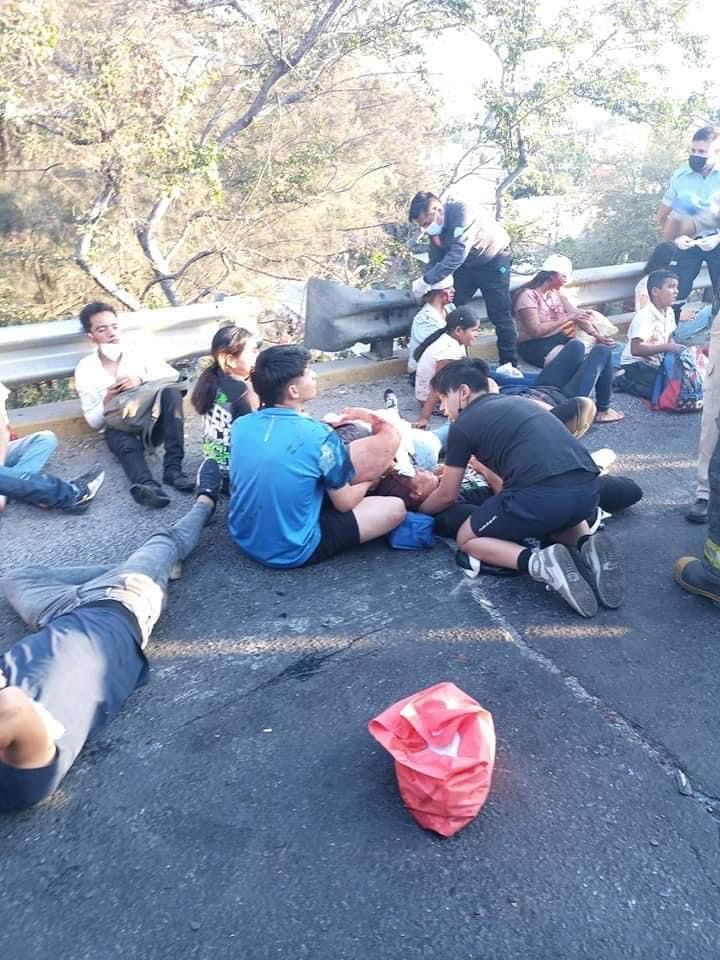
The passengers waited for medical attention on the pavement.
According to the passengers, the driver of the C112 Agaves route was speeding and maneuvering to overtake other vehicles, but on the slope, a truck loaded with scrap metal was driving slowly because of its heavy load, so the public transport driver was unable to slow down enough to avoid the scrap metal truck and struck it from behind.
After the impact, people fell to the floor of the bus and some of them hit the seats hard enough to bend them. The passengers managed to get out of the bus and waited on the roadside for medical attention.
Translated by Sandy Britton
Chapala hands over facilities for State Police barracks
Municipal and state authorities during the handover of the building on the corner of Niños Heroes and Zaragoza streets. Photo: Municipality of Chapala.
Jazmín Stengel.- The former Chapala Police headquarters at the corner of Niños Héroes and Zaragoza streets will now be occupied by the Jalisco Regional Police and the Mobility Department, thanks to the signing of an agreement between municipal authorities and the state. Chapala will continue to pay rent on the building.

Signing of the agreement between municipal and Jalisco authorities for the handover of the former Chapala Police Station. Photo: Municipality of Chapala.
The agreement established last March 25 between Chapala Mayor Alejandro de Jesús Aguirre Curiel and Regional Police Commissioner Abraham Isaac Chávez Velázquez, will allow the State Police to relocate from a small building in La Cristianía Park.
The move gives the State Police better facilities from which to continue working in coordination with the Municipal Police. This helps guarantee the safety of the population just days before the start of the Holy Week and Easter vacation period.
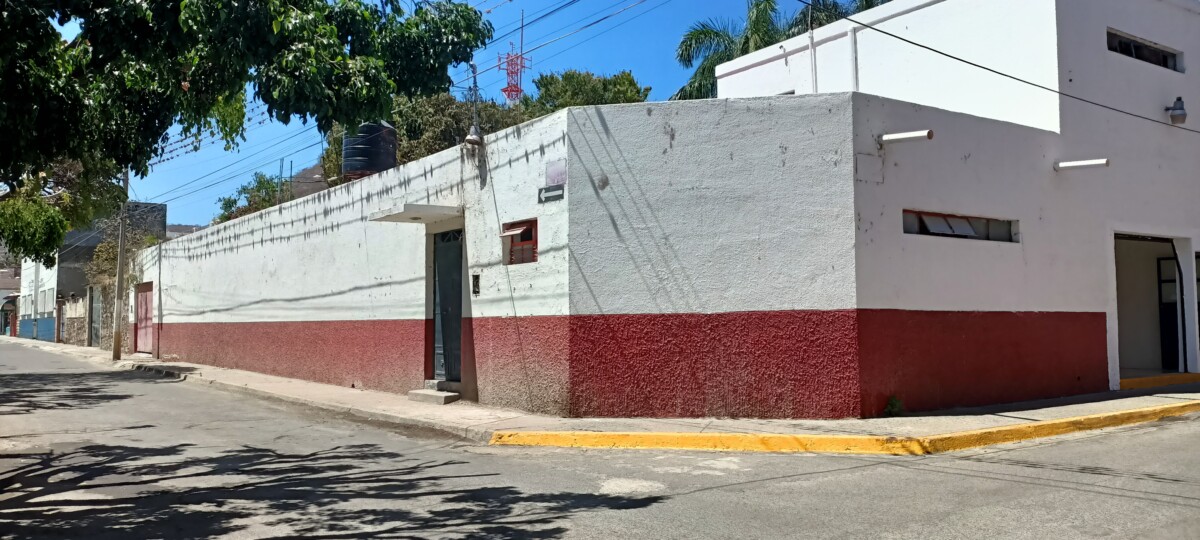
Chapala has rented the building since 1998. Photo: Jazmín Stengel.
Jalisco Secretary of Public Security Juan Bosco Pacheco Medrano said the building is a tool that dignifies police work and helps the State Police coordinate with the municipality to provide peace of mind to both residents and tourists.
“I am pleased to inform you that we have delivered dignified facilities on loan for elements of the State Security Secretariat to have their base of operations,” the mayor said through social media. “The safety and tranquility of the families of Chapala and its visitors is a priority for this government.”

The Regional Police had occupied a small building in La Cristianía Park. Photo: Jazmín Stengel.
Chapala has rented the building since 1998. It was the Municipal Police headquarters until June 2020, when they moved to their new location at the corner of Los Maestros and Isla del Presidio streets. The State Highway Police, with whom the State Police will share the building, began working out of the building a few months ago.
Translated by Mike Rogers
With purple t-shirts Chapala supports UN Orange Day against violence against women
Public and civil servants wore purple shirts to support the Unite Orange Campaign. Photo: Jazmín Stengel.
Jazmín Stengel (Chapala).- The United Nations’ «Orange Unite Campaign» was instituted in 2008 to promote the prevention of violence against women, and takes place on the 25th of each month. Although it has been a little more than 13 years since the campaign opposing violence against women was instituted, this is the first year it has been celebrated in Chapala.
In Chapala, officials and civilians wore purple tee shirts instead of the customary orange, as citizens associate the color with the feminist movement, explained Alicia Medeles Córdova. Córdova is the director of the Women’s Institute of Chapala, who made the proposal after the March 8 International Women’s Day marches and other demonstrations against gender violence in the municipality. The public security officers of the municipality also wore an orange ribbon as a symbol of solidarity with the movement.

Officers from the Municipal Police Station wearing the orange ribbon as a symbol of support for the eradication of violence against women. Photo: Jazmín Stengel.
In addition to promoting the prevention of violence against women in her locality and delegations, Córdova offers counseling and follow-up to those who have been victims of violence, harassment and other types of aggression. She invites the affected population to lose their fear of speaking out and to begin the legal process to defend their human rights.
«The objective is to make a call to the citizenship and that we raise awareness,» clarified Cordova, since the purpose of this campaign at the international level is the same: «a day to act, generate awareness and prevent violence against women and girls.»
Translated by MaryAnne Marble
Local composer achieves dream of scoring a film
Víctor García Rodríguez (right) audio engineer, and Ramón Ramírez, director of photography, with the poster for the film Agua de Arrayán
Jazmín Stengel(Chapala).- The 30-year-old composer Víctor Ignacio García Rodríguez beat cancer in 2019. One year later, life gave him the gift of fulfilling his childhood dream: to score a movie.
García Rodríguez wrote the music for «Agua de Arrayán», a Jalisco film production by director Alejandro Robles Gil that premiered on March 24. García Rodríguez had already made a small musical contribution with the short film «Primera Lección de Magia», directed by Ixtlahuacán de los Membrillos native Ramón Aurelio Ramírez Hernández. Then Robles Gil gave him the opportunity to be in charge of all the music of the feature film.
Two years earlier Víctor’s life was hanging by a thread; at the end of 2018 doctors detected a malignant tumor.. Within seven months, his doctor told him that he needed life-saving surgery.
«I had a lot to live for, since I still wanted to fulfill my dreams, like scoring a movie, I thought I would never be able to do it because I didn’t have the money; I don’t have insurance and I am a musician at heart,» García Rodríguez recalled.
A group of expats, friends, and admirers of the musician collected donations for him. On February 17, 2019, an event organized by Daniel Cordero with more than ten musical groups and soloists was held at the Iron Horse, a biker bar located in Riberas del Pilar. That day painters and photographers donated their works and more than a hundred musicians contributed their work. The community of Chapala and Ajijic raised the funds needed to save Victor’s life.
«So many times I have given my music from my heart to the people, that has been a miracle of God.» García Rodríguez has now undergone surgery and radiation three times, with one more to come. All have been paid for through donations that people offer him from their hearts, he said.
The film «Agua de Arrayán» tells of the journey of a pilgrim to visit the Virgin of Talpa, emphasizing values and personal growth. Garcia Rodríguez made the harmonies using only a computer, an interface, a controller and horn monitors. «The composition is somewhat mysterious,» he said.
The composer and musician hopes to continue his career in the world of cinema, «I still have a very long way to go, knowledge can be infinite,» he concluded.
The film «Agua de Arrayán» can be seen in 18 theaters of the Cinépolis chain in Guadalajara and in theaters in San Luis Potosí and Monterrey.
Translated by Elisabeth Shields
Comerciantes solicitan más ingresos en áreas verdes del malecón para el turismo y mejorar sus ventas
Así lucen los primeros 200 metros de áreas verdes rehabilitadas; hasta el momento sólo se ha terminado la primera fase del proyecto. Foto: Jazmín Stengel.
Jazmín Stengel.- Comerciantes del malecón de Chapala consideran que la rehabilitación de áreas verdes «se ve bonito»; sin embargo, han registrado bajas ventas debido a que, los turistas prefieren seguir de largo cuando se ven en la necesidad de rodear la cerca que circula éste espacio para ir al baño o comprar algún alimento.
Esto es debido a que la cerca de los 200 metros lineales de área verde, que se habilitaron frente al Jesús Pescador, a un lado del parque de patinetas en el malecón de Chapala, sólo cuenta con entradas desde el andador del malecón y el paso hacia los comercios se encuentra cerrado.
La zona circulada cuenta con dos entradas al sur, pasto sintético y bancas en forma “U” para disfrute de los visitantes.
Durante el recorrido de supervisión que hizo el presidente municipal, Alejandro de Jesús Aguirre Curiel, antes de finalizar la primera etapa de esta obra, el pasado 23 de marzo, indicó que la reja se instaló con el fin de evitar el hostigamiento de los vendedores ambulantes y meseros de la zona hacia los visitantes.
Sin embargo, los restauranteros y locatarios del lugar sugirieron al presidente ese día una entrada trasera para facilitar el paso a los turistas, aún que a los meseros y ambulantes no se les permitiría ofrecer su producto dentro de la zona cercada, situación que aún sucede.
A pesar de que la petición del ingreso extra fue hecha el mismo día del recorrido y encargada por parte del presidente al director de Obras Públicas, Juan Julio Novoa Sandoval, encargado directo de la obra, hasta el cierre de esta edición la primera fase concluyó sin modificaciones.
Esto provocó bajas en las ventas del malecón el último fin de semana. Y es que, aunque los meseros continúan ofreciendo sus productos, los turistas se van de largo al tener que rodear la malla, ya sea para sentarse en los equipales dispuestos para sus comensales o para ir al baño cuando se encuentran dentro del área verde.
Son pocos, y en su mayoría meseros por comisión o freelance, los que hasta el momento se quejaron sobre el recorte de mesas que provocó este cambio de imagen. De tener hasta ocho mesas cada establecimiento, ahora solo se les permite instalar cuatro.
Sin embargo, los comerciantes se han visto más afectados por la falta de acceso entre el andador del malecón, el área verde y la zona comercial.
«Si hubiera entrado por atrás, no molestaría tanto», comentó una locataria refiriéndose a los argumentos de los quejosos. «La gente viene a comprar, pero al tener que rodear por segunda vez prefieren seguir su camino», agregó la encargada del local vecino quien también es restaurantera.
Por su parte, los visitantes consultados dijeron sentirse más tranquilos para convivir o ingerir sus alimentos y bebidas, aunque los músicos continúan ofreciendo sus servicios a pesar de la cerca. «Me siento un rarito, al menos hasta que me dan ganas de ir al baño», comentó una mujer de edad mayor que disfrutaba de la recién rehabilitada área verde.
Por último, Laguna observó durante más de media hora como la gente hacía uso de esta zona, ya sea con o sin alimento, con o sin consumir de los comercios. Pero en varias ocasiones, los turistas de paso preferían seguir su camino hasta el área de la rampa antes de rodear el sitio cercado.
Esta es la primera de cuatro etapas de intervención en el malecón, anunciadas por el presidente de Chapala, Alejandro Aguirre Curiel.
Tacos Diana: Preserving a family recipe and sustaining a family
Diana Ramos in front of her stand serving customers during the evening of Tuesday, March 29. Photo: Jazmín Stengel.
Diana Lizeth Ramos Mendoza has not only managed to provide for her three children, but also to keep alive one of the most popular recipes in Chapala.
Diana, who sells tacos in the neighborhood of La Purísima and comes from a family of merchants, married César Abrego, who was the heir to the secret adobo recipe of Tacos Don Max, located on Francisco I. Madero Avenue.
According to Diana when she was married to César, they decided to dedicate themselves to her husband’s family business. Later he went to work with his relatives, but he left her the business when they separated, which Diana took over and has been running ever since.
This is how the young woman, now 29 years old, began to familiarize herself with the process of meats, sauces and marinades. She estimates that she has been running her stand alone for about three years. “After the separation with César «I had to do it all by myself», she said.
Tacos are an important part of Mexican cuisine. Taco Day is commemorated in Mexico on March 31, since 2007. In t México the most famous tacos are: al pastor, carnitas, barbacoa, cochinita, asada, canasta, steamed, golden, placeros, stew, beef and even the governor taco, which is made with wheat flour with shrimp and Oaxaca cheese, very common in the northern coastal part of México. And of course, many other styles.
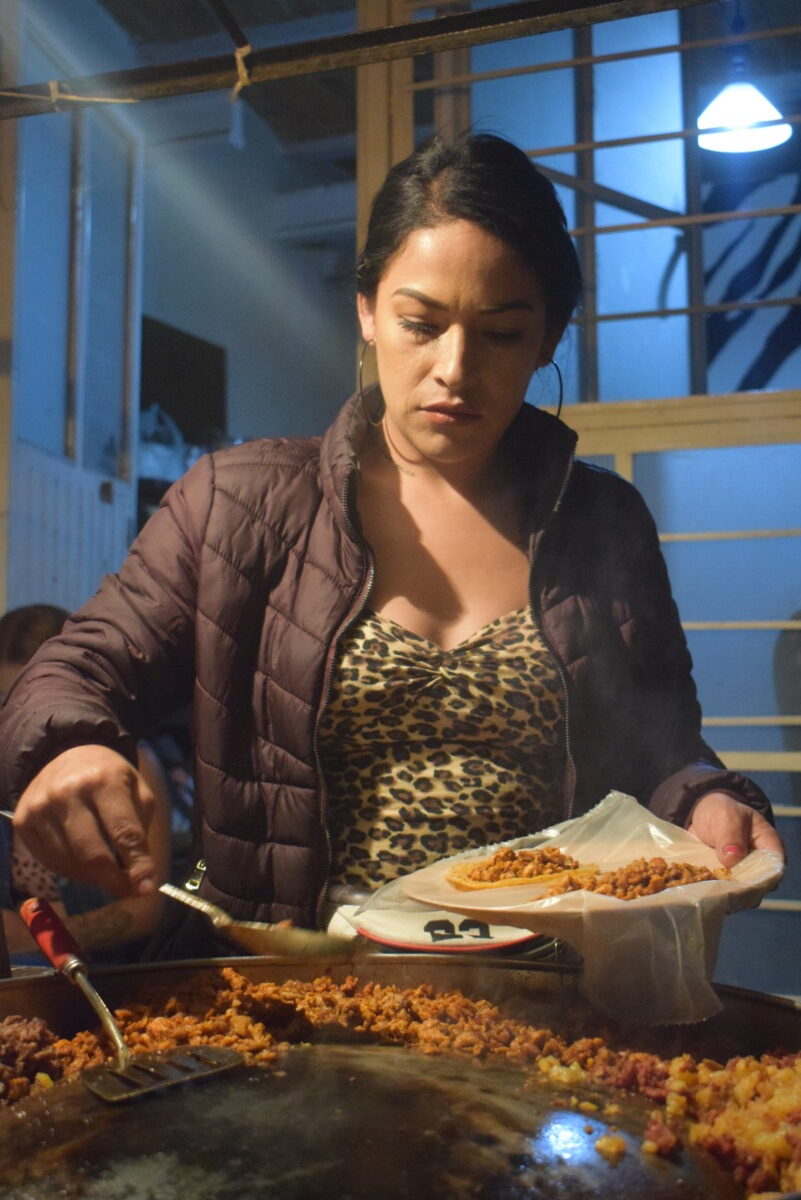
Selling tacos with the adobo recipe inherited from her ex-husband.
Diana’s daily routine consists of getting up in the morning to take her three children to school, then she takes advantage of the trip to order tortillas, buy meat and vegetables at the Chapala market.
After running the errands, she has to pick up the children from school, so Diana barely has enough time to prepare lunch for her two boys and a girl.
Her workday starts around three in the afternoon: chopping onions, cilantro and radishes, preparing the marinade, cooking the meat, vegetables and preparing the sauces. This is something Diana does five out of the seven days of the week with the help of her children.
What convinced Diana to dedicate herself to selling tacos was the ease of taking care of her children while working in front of her house. Today, Diana continues to sell adobada and papa con chorizo tacos from Saturday to Wednesday starting at 8:00 in the evening in the neighborhood of La Purisima, on Miguel Martinez Street, in front of the house marked with the number 477.
However, the low season and the increase of prices in basic foods have forced her to look for other sources of employment to help her to continue with the family tradition of selling tacos.
Translated by Sydney Metrick
Governor Alfaro announced the rehabilitation of the Auditorio de la Ribera will be completed by the middle of the year
Architects and those in charge of the work, explained the works to the Governor of Jalisco, Enrique Alfaro Ramírez. Photo: Sofía Medeles.
Sofía Medeles (Ajijic).- After his March 25 tour of the Auditorio de la Ribera in Ajijic, Jalisco Governor Enrique Alfaro Ramírez, announced that the remodeling of the Auditorio will be completed in approximately 4 months.
Although previously, those in charge of the project had said that they had no date for the beginning of the third and last stage of the renovation, Alfaro Ramírez stated during his visit that it should be finished in four months and the cultural center should be up and running by the middle of this year.
«The last stage includes the entrance space, details in the auditorium and adjustments that had to be made at the end, but more than anything else, the entrance, the pond and specialized equipment,» the governor said.
He pointed out that, although 70 million pesos have already been invested in the project so far, a budget for the equipment for the center has yet to be designated.
«A budget is being developed and we are looking to involve the businesses of Chapala that offered to help. The budget will be ready in the following weeks and we will see if the private initiative will lend us a hand. Surely the equipment will also be ready within the remaining four months,» he added.
At the end of the tour of the facilities of the cultural complex, Chapala municipal president Alejandro de Jesús Aguirre Curiel, thanked the governor for the space, asserting that it will be of great importance for Ajijic, which has many talented performing artists and traditions, so it will be a good place for them to continue developing.
Also present during the governor’s visit were Alejandro Guerrero, one of the architects in charge of the project, Lourdes González Pérez, head of the state’s Culture Secretariat, and congresswomen María Dolores «Lolis» López Jara , and Claudia Murguía Torres.
The rehabilitation work began in 2020 and is part of a state project called «Cardinal Culture», which aims to develop cultural activities outside the capital of Jalisco. The auditorium will not only host artistic presentations of different disciplines, but will also host courses, as well as offices of the Jalisco Ministry of Culture.
Translated by Patrick O’Heffernan
© 2016. Todos los derechos reservados. Semanario de la Ribera de Chapala


